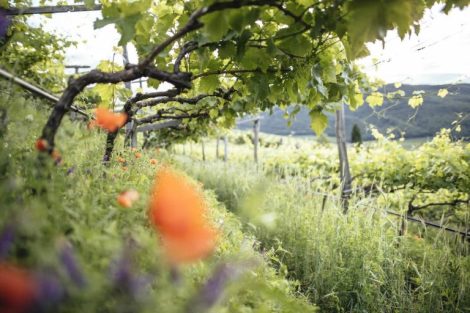Molise is the second smallest region in Italy. However, within its nearly 4,500 square kilometres, it manages to encompass mountains, a wide hilly landscape, and a short stretch of coastline. This undulating plateau, framed by the Mainarde and Matese massifs, gradually slopes down towards the sea. Though off the beaten tourist track, this isolation may be what preserves its charm, especially from a naturalistic perspective.

Tre Bicchieri 2025 Molise: the grapes
In this environment, grape growing has a long history and is deeply intertwined with the rural heritage of the region. Like many border areas, Molise has porous boundaries that, over time, have allowed grape varieties to move between regions. Thus, you’ll find Montepulciano from neighbouring, but very different, Abruzzo, Trebbiano from the same area, Falanghina from Sannio, and Greco, but especially Aglianico, from Irpinia.
Tre Bicchieri 2025 Molise: Tintilia
However, this does not mean that Molise lacks its own unique characteristics. This is evident from the work being done with the only truly indigenous grape variety, which is increasingly producing excellent results. That grape is, of course, Tintilia, and this year we are awarding, for the first time, a lively and playful version, the 200 Metri '23 by Tenimenti Grieco, alongside the classic Don Luigi Riserva '20 by Di Maio Norante.
Once again, however, we must highlight a downside: too few wineries from Molise have chosen to participate in our tastings this year. The profiles of the region’s wineries on our website and in the printed Vini d'Italia guide by Gambero Rosso will never grow if our engagement with Molise’s wine scene remains limited to a handful of, albeit increasingly skilled, producers.


 "Biodynamic preparations ave no effect on viticulture": The shocking conclusions of a Swiss study
"Biodynamic preparations ave no effect on viticulture": The shocking conclusions of a Swiss study Ten last-Minute Christmas gift ideas for a wine nerd
Ten last-Minute Christmas gift ideas for a wine nerd Food and wine tourism generates €40 Billion in revenue: Tuscany, Emilia-Romagna, and Puglia take the podium
Food and wine tourism generates €40 Billion in revenue: Tuscany, Emilia-Romagna, and Puglia take the podium "Non-alcoholic wine shouldn’t be demonised: it’s in everyone’s interest that it’s not just a passing trend". Piero Antinori opens the door to the category
"Non-alcoholic wine shouldn’t be demonised: it’s in everyone’s interest that it’s not just a passing trend". Piero Antinori opens the door to the category The Slovenian chef passionate about foraging who cooks in a remote castle
The Slovenian chef passionate about foraging who cooks in a remote castle






